Editor’s Note: Every month the cover of BATTLE ACES depicts a scene from a real combat actually fought in the War and a real event in the life of a great ace. The series is being painted exclusively for this magazine by Frederick M. Blakeslee, well-known artist and authority on aircraft and was started especially for all of you readers who wrote us requesting photographs of war planes. In this way you not only get pictures of the ships—authentic to the last detail—but you see them in color. Also you can follow famous airmen on many of their most amazing adventures and feel the same thrills of battle they felt. Be sure to save these covers if you want your collection of this fine series to be complete.
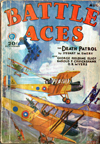 THE COVER this month tells one of the best stories of the War, and that’s saying a lot, because it’s hard to find one that isn’t good. It shows First Lieutenant William C. Potter winning his Distinguished Service Cross—a decoration well earned, as you shall see.
THE COVER this month tells one of the best stories of the War, and that’s saying a lot, because it’s hard to find one that isn’t good. It shows First Lieutenant William C. Potter winning his Distinguished Service Cross—a decoration well earned, as you shall see.
A formation of eight reconnaissance machines, when on a daylight bombing mission in the vicinity of Dun-sur-Meuse, on September 26th, 1918, was attacked by a force of enemy planes three times its number. Now twenty-four Jerries in one formation is a whale of a formation, believe me. Go out some nice clear morning, point your finger at twenty-four places in the sky, and you’ll get some idea of the amount of ammunition floating about that September day.
All hell broke loose when the two formations met. Potter, with his observer, was in the thick of it, and the Jerries had good cause to remember him that day. The fight had been on only a few moments when Potter noticed that his leader’s plane was pulling away from the battle toward Germany, and that the pilot was making desperate efforts to control the machine. The observer’s guns were inactive. Here was a bit of cold meat for the Boche flyers. They weren’t long in realizing it. A half dozen or more left the dogfight and tore in to finish the Yank off, but they hadn’t reckoned with Potter. He also left the fight, and, “under conditions demanding greatest courage and determination flew in close so as to protect him from the rear.”
He beat off the immediate attack on his leader, but by this time they were both well over Germany. The Allied ships had disappeared, and the disabled plane showed no indication of turning. Potter of course knew that something was desperately wrong. The observer was invisible—gone overboard perhaps—but why didn’t the pilot turn? Was he lost? Couldn’t he turn? That was it! The meaning of the pilot’s frantic signaling at last became clear. He couldn’t turn! For some reason the controls were jammed.
Well, he couldn’t leave a helpless comrade to the mercy of the Fokkers, so with renewed energy he fought on, determined to protect his leader to the last drop of blood or gas. By now they were deep in enemy territory and getting deeper every second. Chances of regaining their own airdrome were fast decreasing. The fight raged furiously, the only advantage on the side of the Americans being the Jerries’ inability to separate them, and the great number of German ships which had to watch each other to avoid collision.
Conditions were getting desperate, when suddenly, to Potter’s relief, the leader made a turn about, headed at last for home. Lieutenant Potter turned with him. Regaining his position he started to fight his way toward Allied territory, now miles ahead.
They had a long distance to go, gas was getting low and the ships were badly shot. But the planes continued to fly, and as long as the ammunition held out, the Yanks knew they now had a chance.
The frustrated Boche buzzed after them like a swarm of angry bees. Soon the two speeding planes were back over the lines where the Jerries decided to depart, helped in their decision by the presence of a few Allied wasps. The two tired pilots landed their riddled machines on their own airdrome on the last drop of gas.
It was found that the leader had been unable to turn because his observer had been killed early in the fight, and in falling had jammed the controls. It was only due to the skilled protection afforded by Lieutenant Potter that he had been given an opportunity to clear the jam.

The two ships pictured are not the machines that figured in this experience; we show these because they are more famous than the ones actually used. They are R.E.8’s, also known as the Harry Tate, a British experimental machine, hence the letters R.E.
First produced in 1912, the R.E. had a Beardmore 120 h.p. engine. It gave some good climbs, but being somewhat troublesome to land, was not built in quantities and was more or less obsolete during 1918. Later developments of the type produced in 1914-15-16, showed greater speed and were used in active service for certain specific purposes. The R.E.8, being the eighth in the series, was used during the later period of the war. It resembled somewhat the B.E.’s, known as “Quirks”—two guns fired through the propeller, that was very often four-bladed, and one gun on a swivel in the observer’s cockpit. It had an R.A.F. 4A, 150 h.p. engine; its weight was 2,680 lbs.; speed at 5,000 feet, 103 m.p.h., and at 10,000 feet, 96 m.p.h. It could climb to 5,000 ft. in 11 minutes, 25 seconds, and to 10,000 ft. in 29 minutes, 5 seconds. It’s absolute ceiling was 17,000 ft. Besides reconnaissance work, it could give a very good account of itself in a fight.

“The R.E.8’s and Lieutenant Potter” by Frederick M. Blakeslee (August 1931)
Next week the cover of BATTLE ACES will show a Pfaltz, attacking a D.H.9 which First Lieutenant S.C. Alexander of the 99th Aero Squadron is piloting. The OCTOBER number will show First Lieutenant R.O. Linsay in an S.E.5 fighting a flock of Fokkers. Others in the series will be announced later. The present cover is the third in the series. Last month we featured the B.E. Fighter, and the cover of the June issue showed a flight of S.E.’s attacking a Boche balloon.
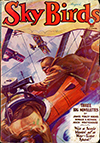 TWO-SEATER pilots were not always confined to “action front.” There were times when they had to be able to use the rear Lewis—many times, in fact. This month’s cover shows a pilot whose observer had been killed during a dogfight, and as most of the opposition was coming from the rear, and he had little or no chance to out-maneuver the Jerry ships, the pilot was forced to lean back in his cockpit and take over the observer’s gun.
TWO-SEATER pilots were not always confined to “action front.” There were times when they had to be able to use the rear Lewis—many times, in fact. This month’s cover shows a pilot whose observer had been killed during a dogfight, and as most of the opposition was coming from the rear, and he had little or no chance to out-maneuver the Jerry ships, the pilot was forced to lean back in his cockpit and take over the observer’s gun.




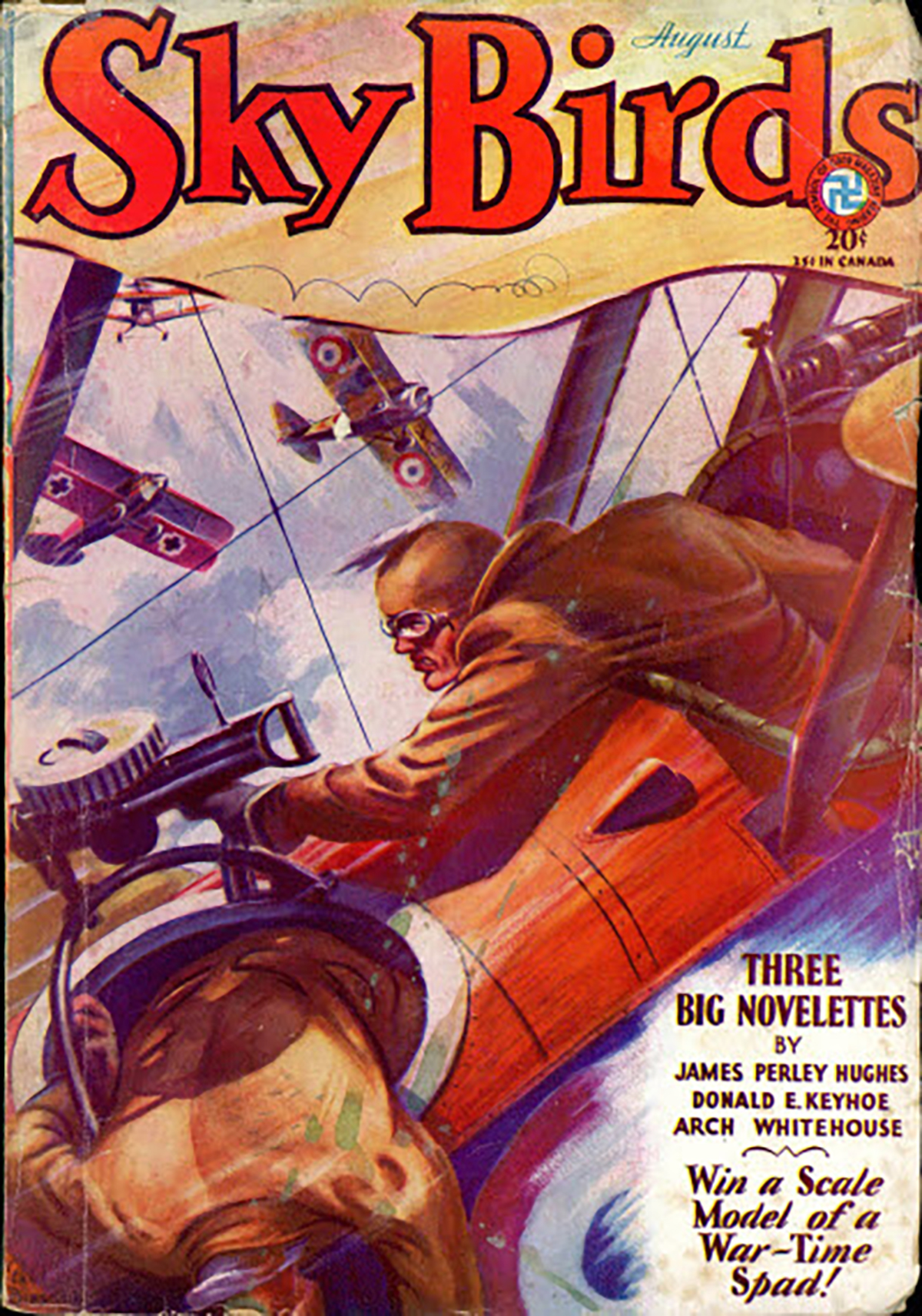
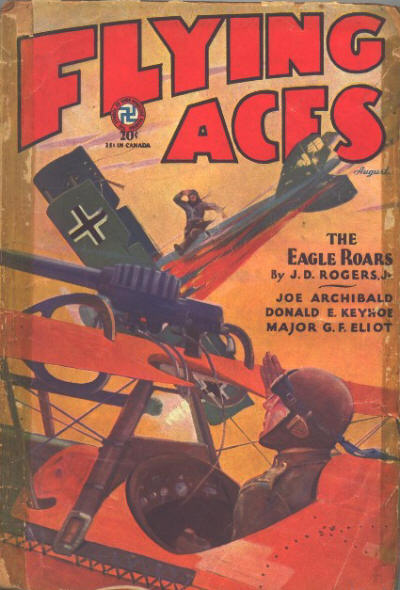 That sound can only mean one thing—that Bachelor of Artifice, Knight of Calamity and an alumnus of Doctor Merlin’s Camelot College for Conjurors is back to vex not only the Germans, but the Americans—the Ninth Pursuit Squadron in particular—as well. Yes it’s the marvel from Boonetown, Iowa himself—Lieutenant Phineas Pinkham!
That sound can only mean one thing—that Bachelor of Artifice, Knight of Calamity and an alumnus of Doctor Merlin’s Camelot College for Conjurors is back to vex not only the Germans, but the Americans—the Ninth Pursuit Squadron in particular—as well. Yes it’s the marvel from Boonetown, Iowa himself—Lieutenant Phineas Pinkham! 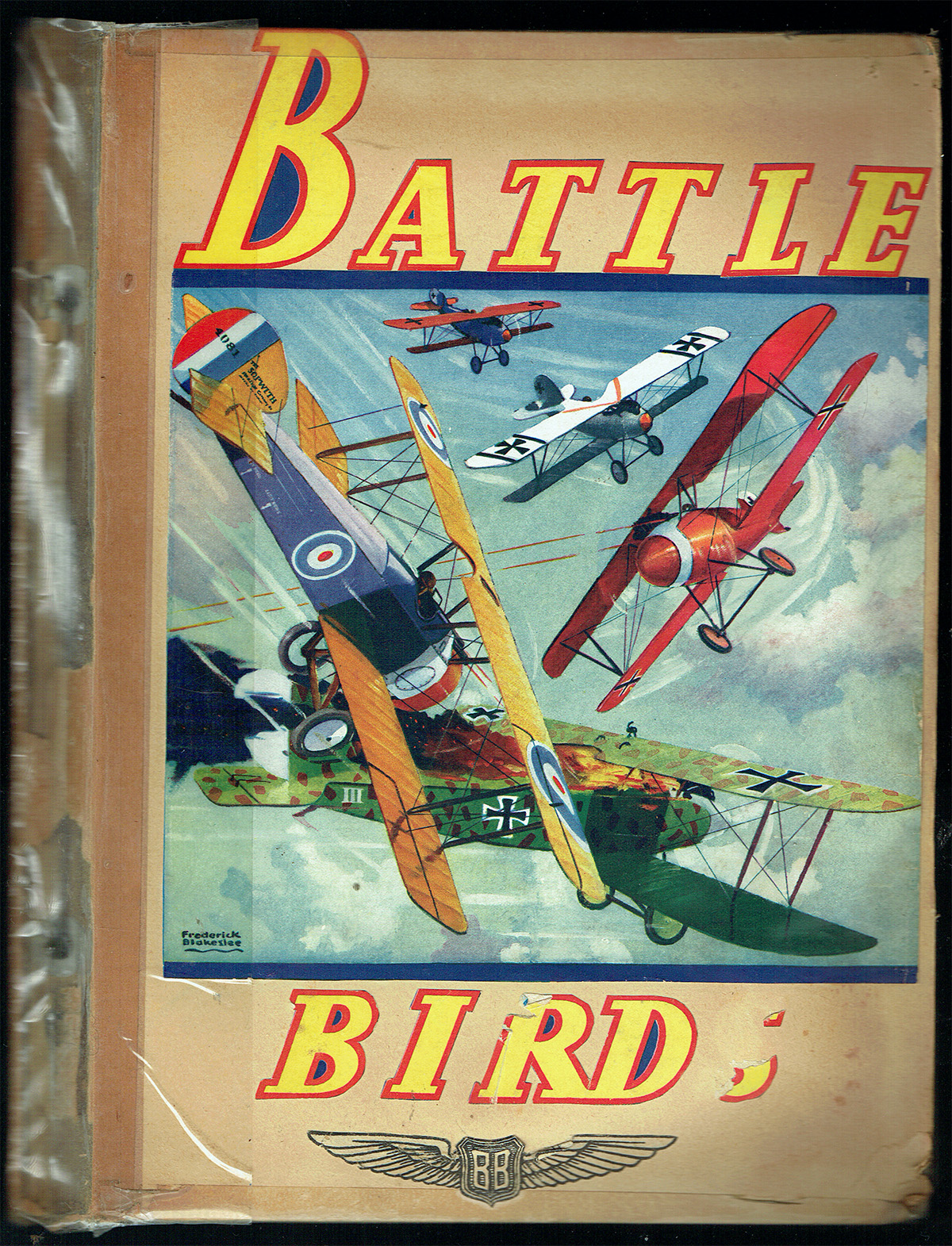 Like many in the late 20’s and early 30’s, Robert O’Neil was fascinated with aviation and as such, a large part of both volumes of his scrapbooks is taken up with a cataloging of the many different types of planes. But amongst all the planes and air race flyers and info on Aces are some surprising items. Robert was also fond of including cut-outs from covers of all kinds of aviation themed magazines.
Like many in the late 20’s and early 30’s, Robert O’Neil was fascinated with aviation and as such, a large part of both volumes of his scrapbooks is taken up with a cataloging of the many different types of planes. But amongst all the planes and air race flyers and info on Aces are some surprising items. Robert was also fond of including cut-outs from covers of all kinds of aviation themed magazines.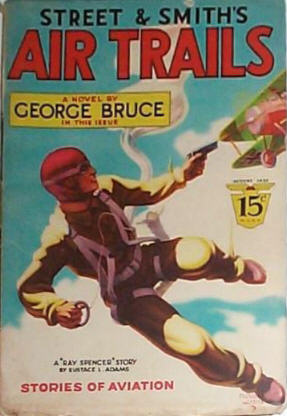
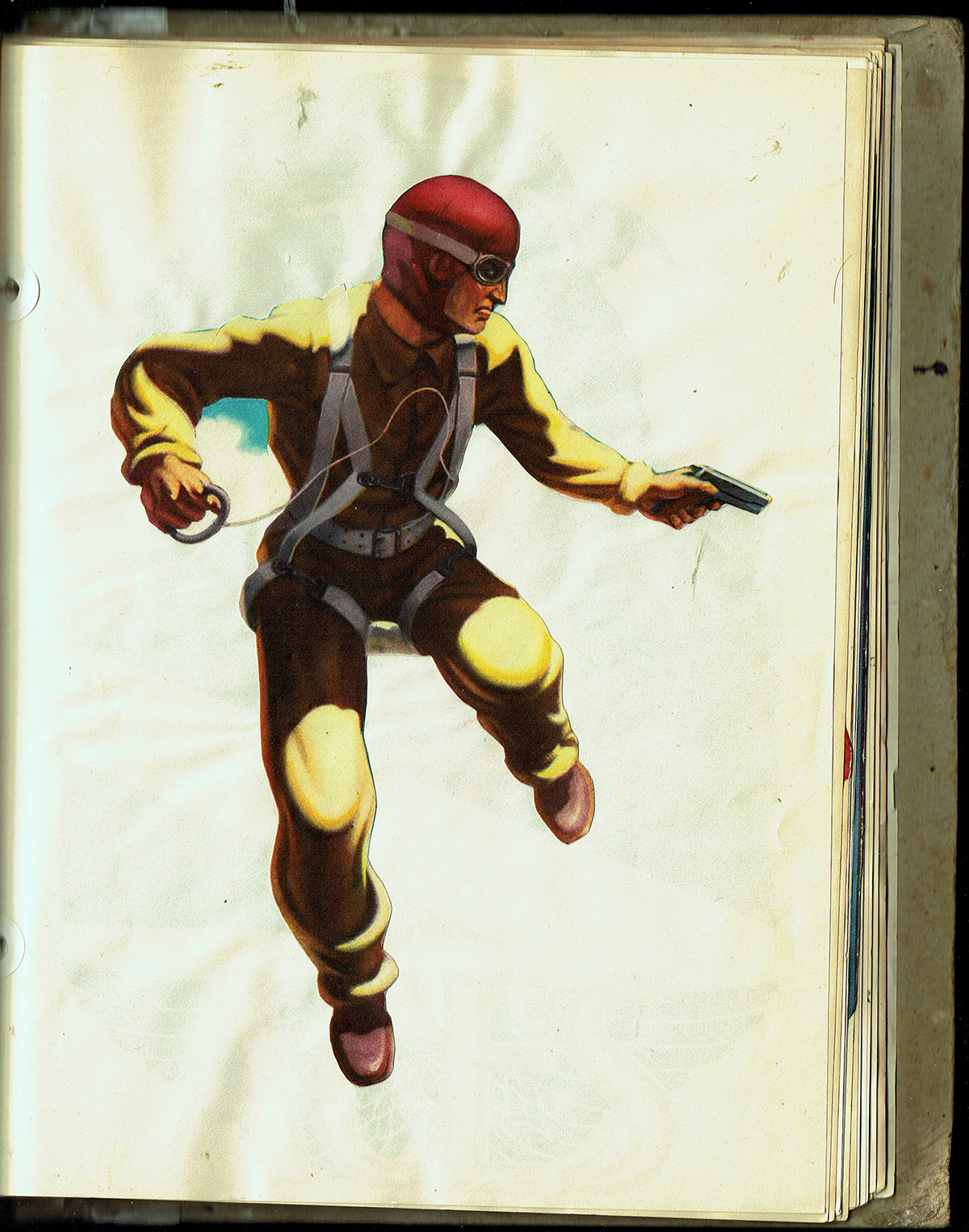
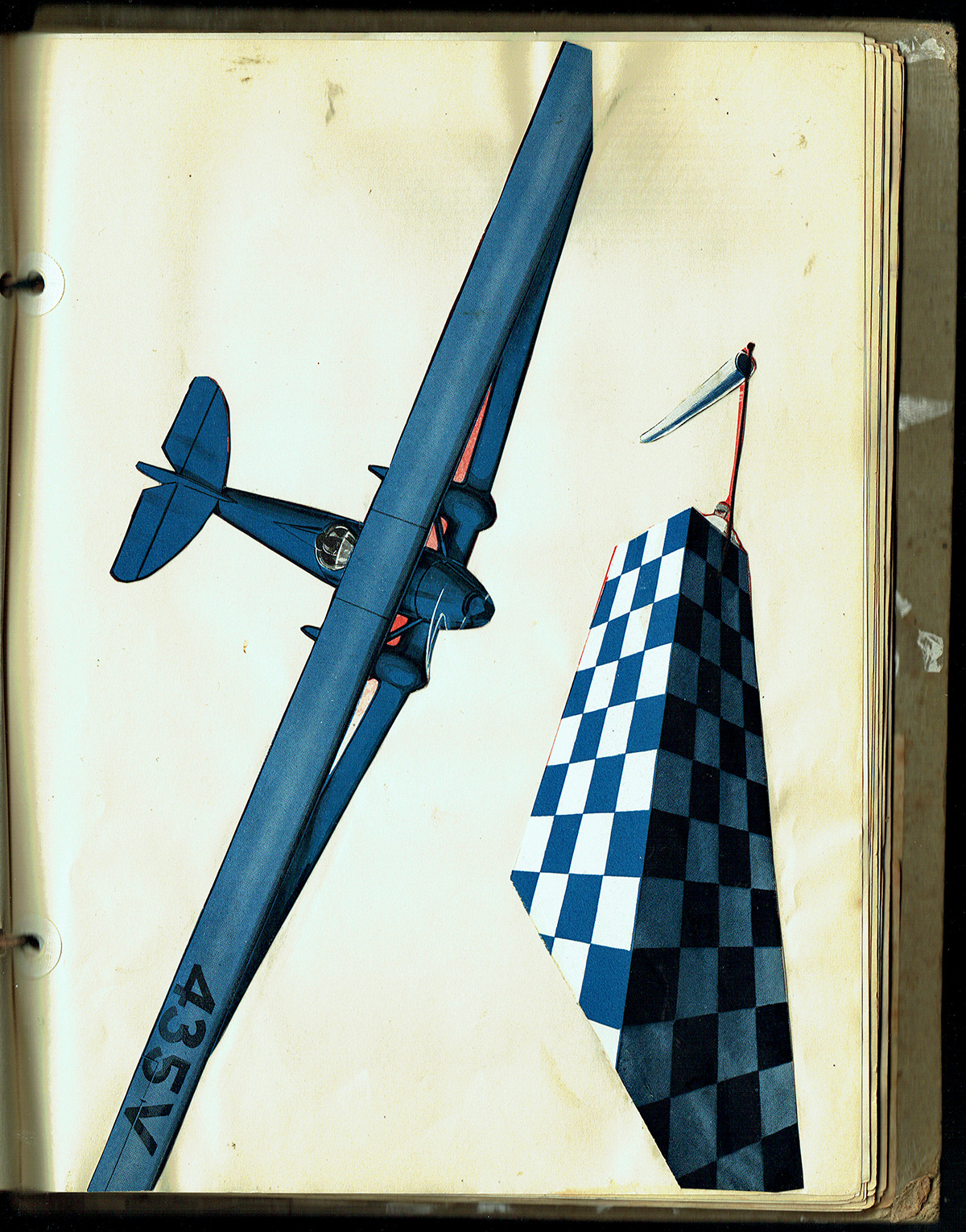
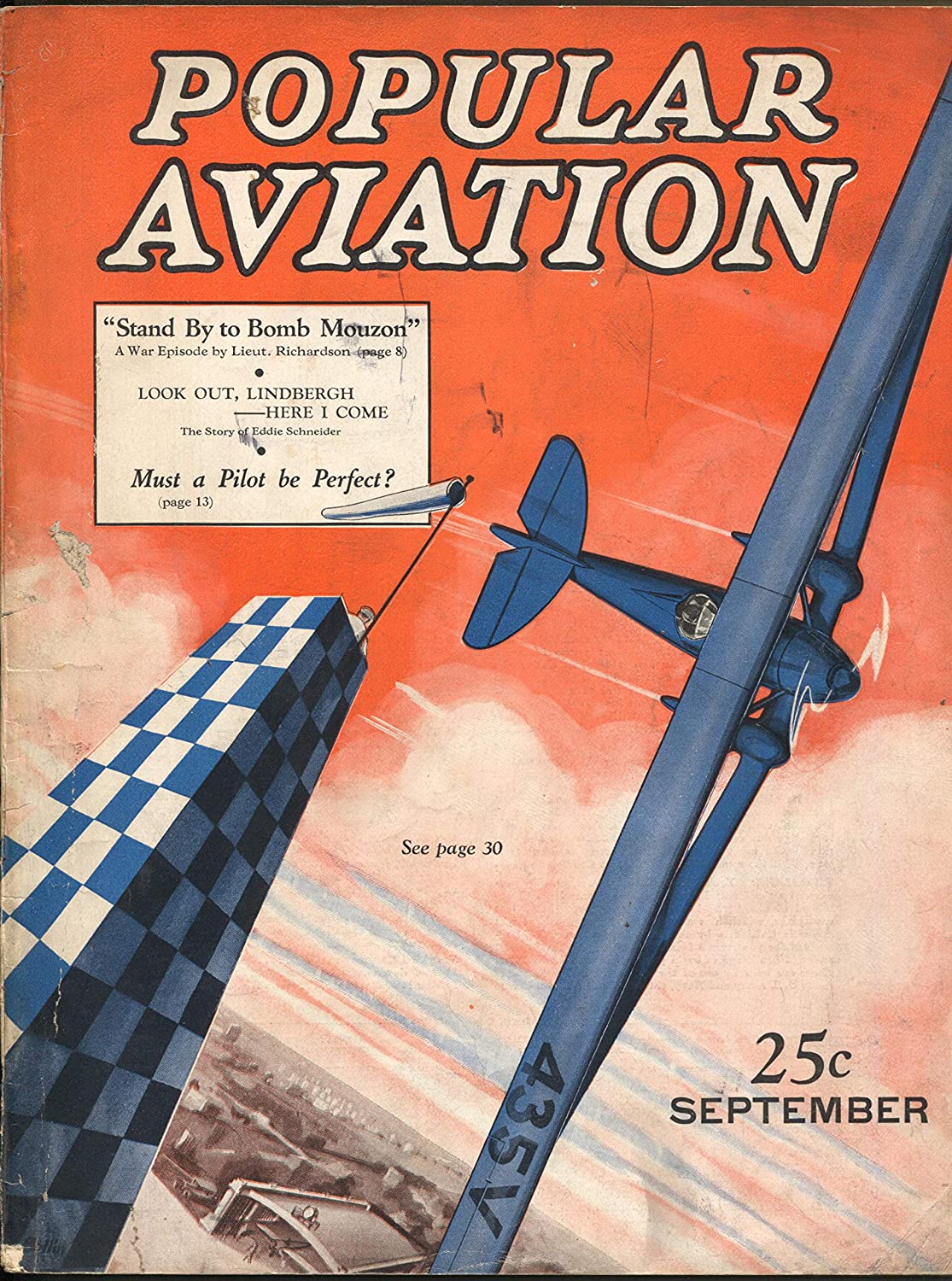
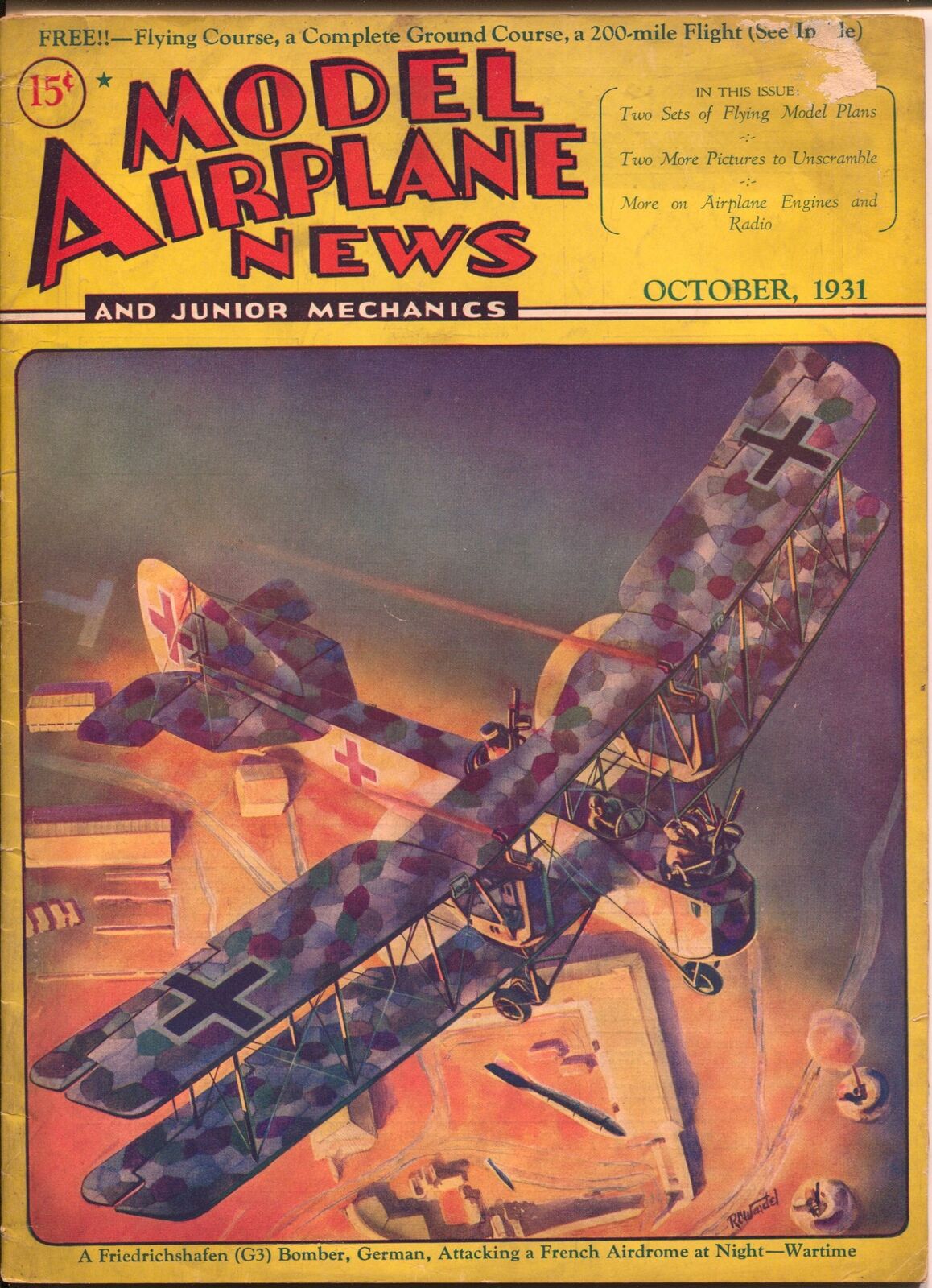
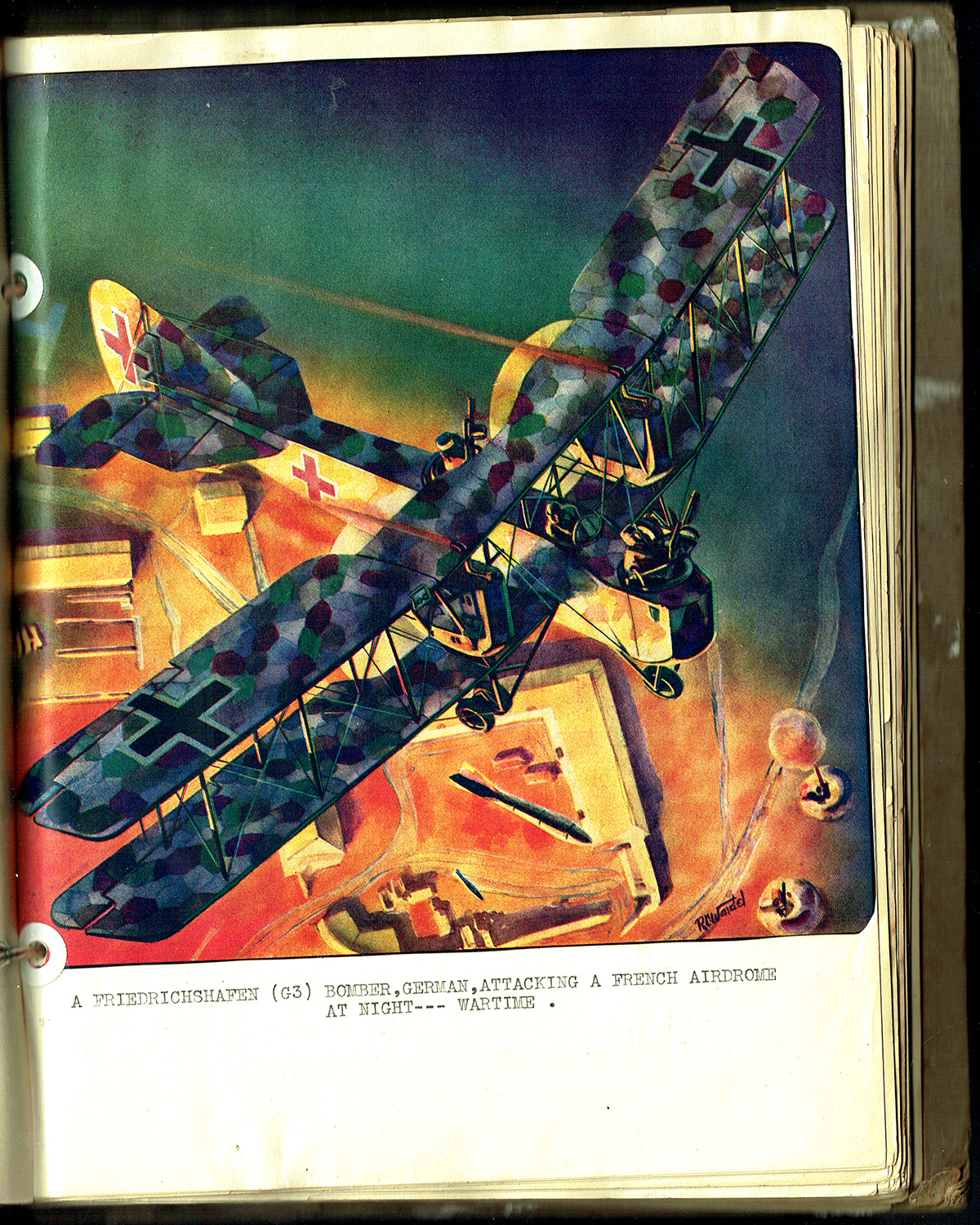
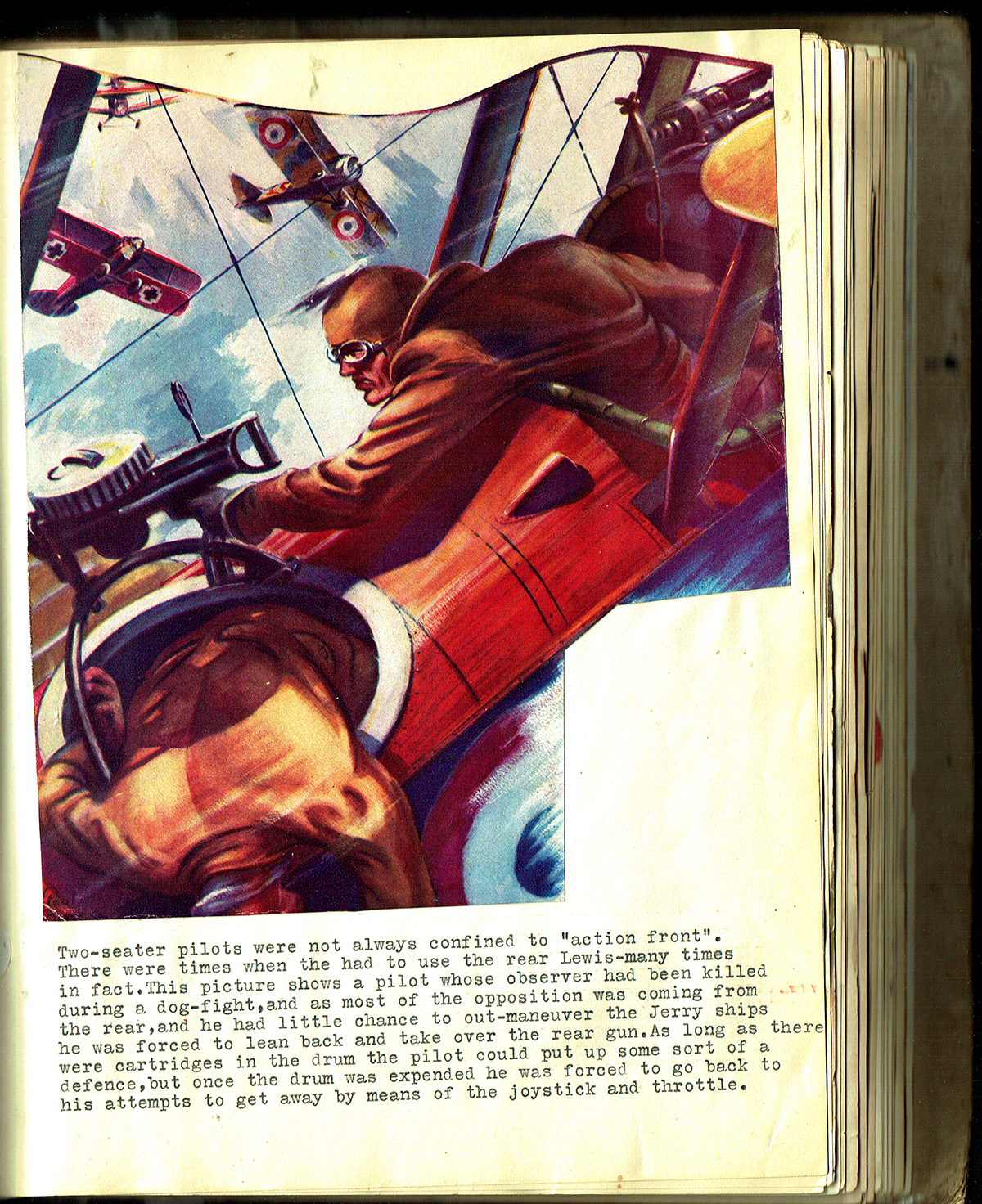

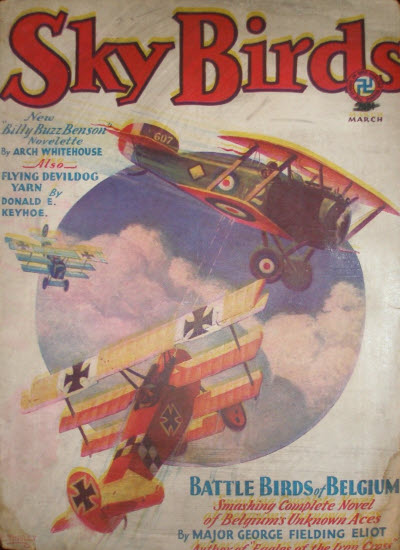
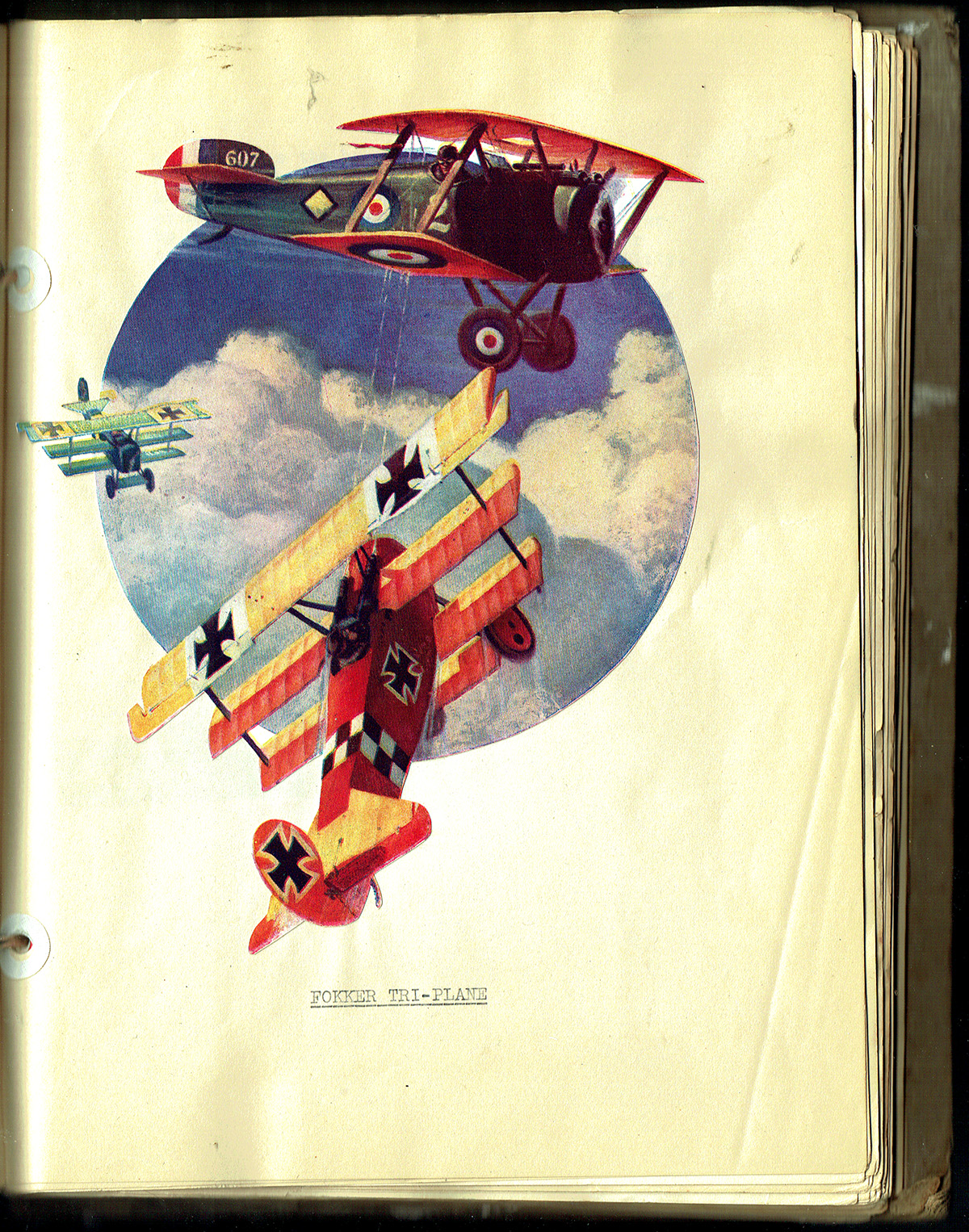
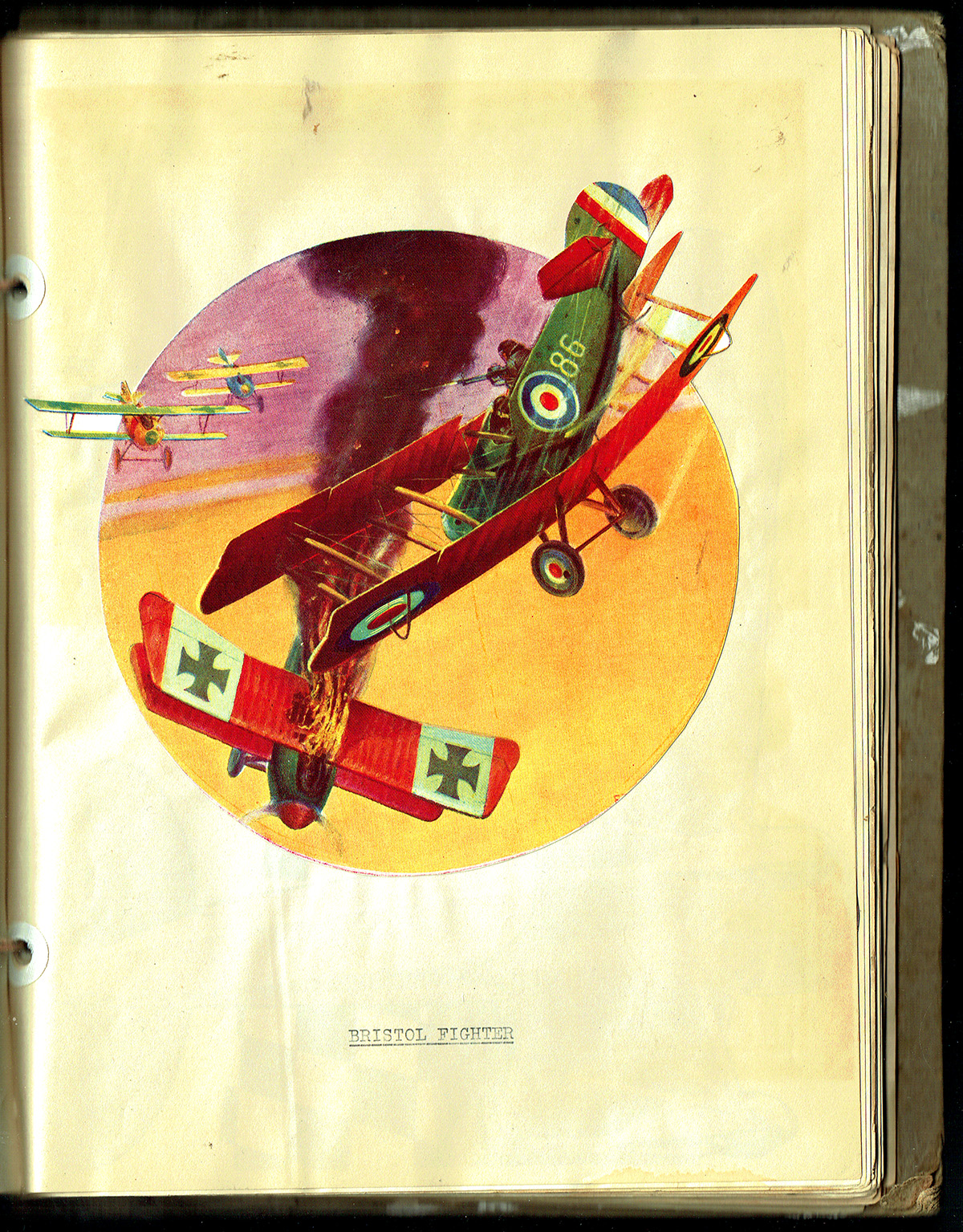
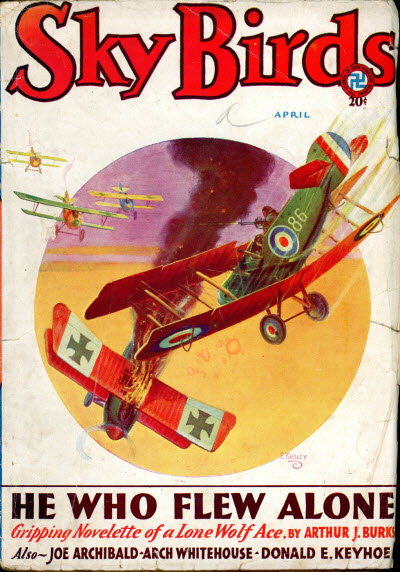
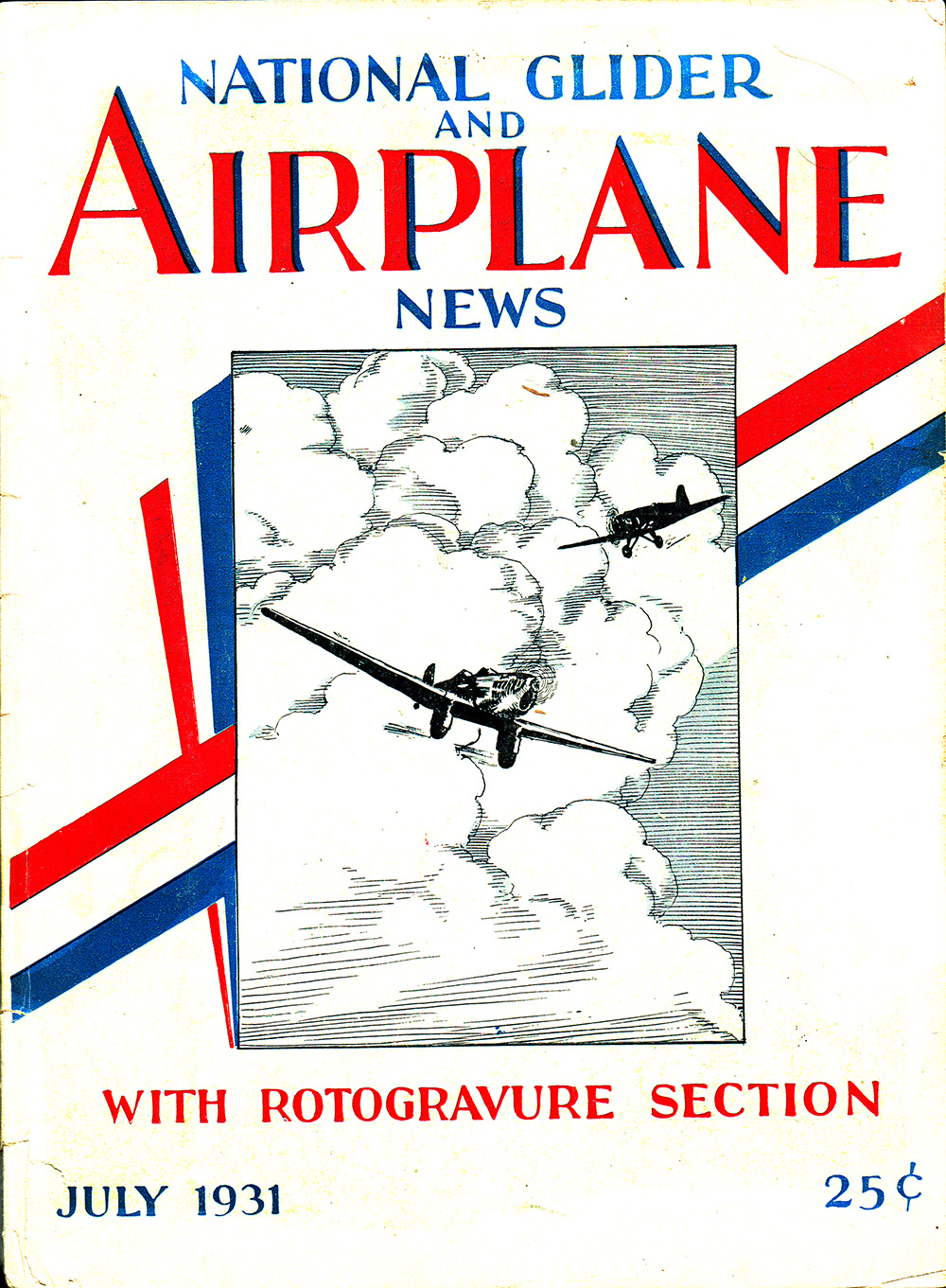
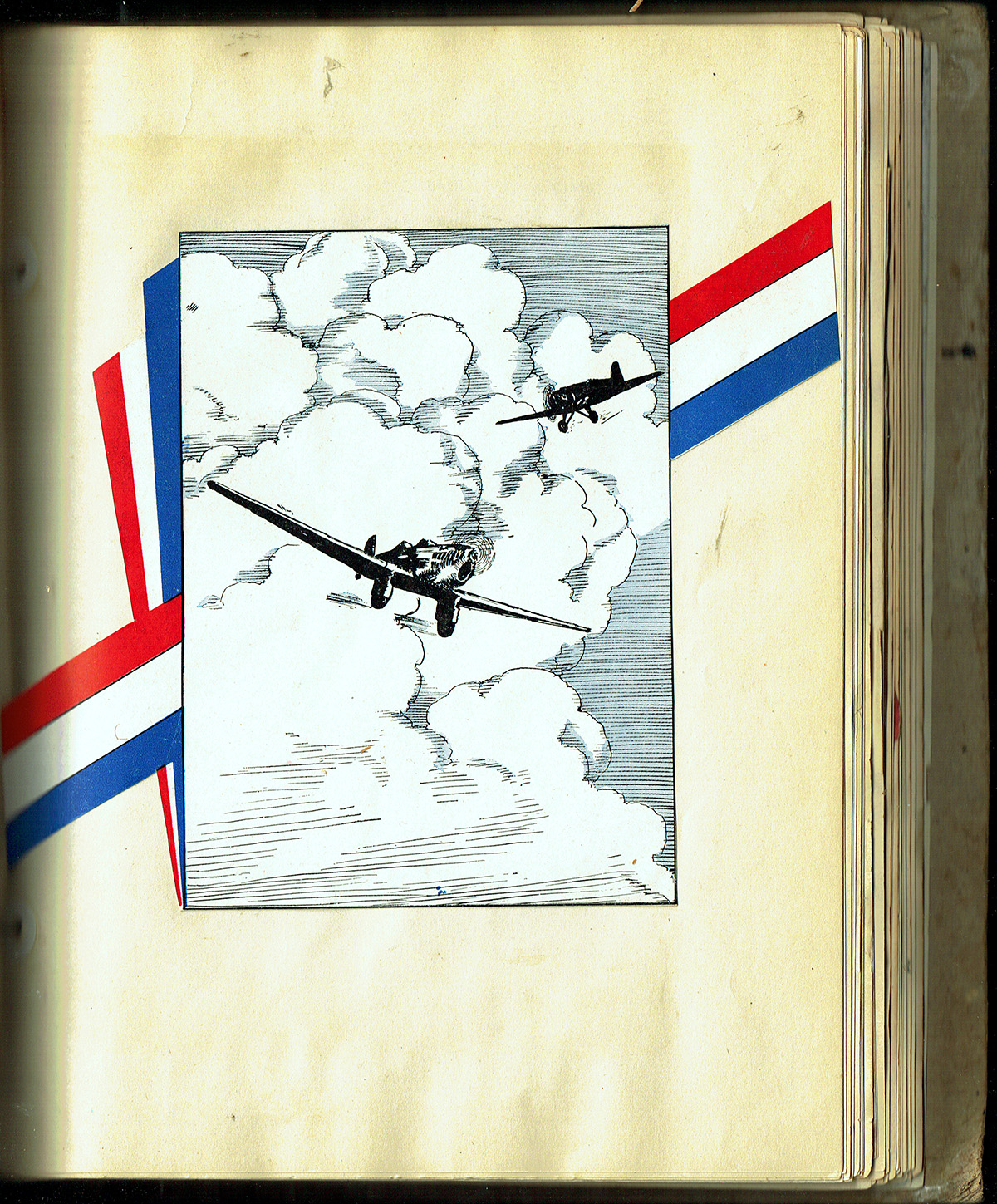
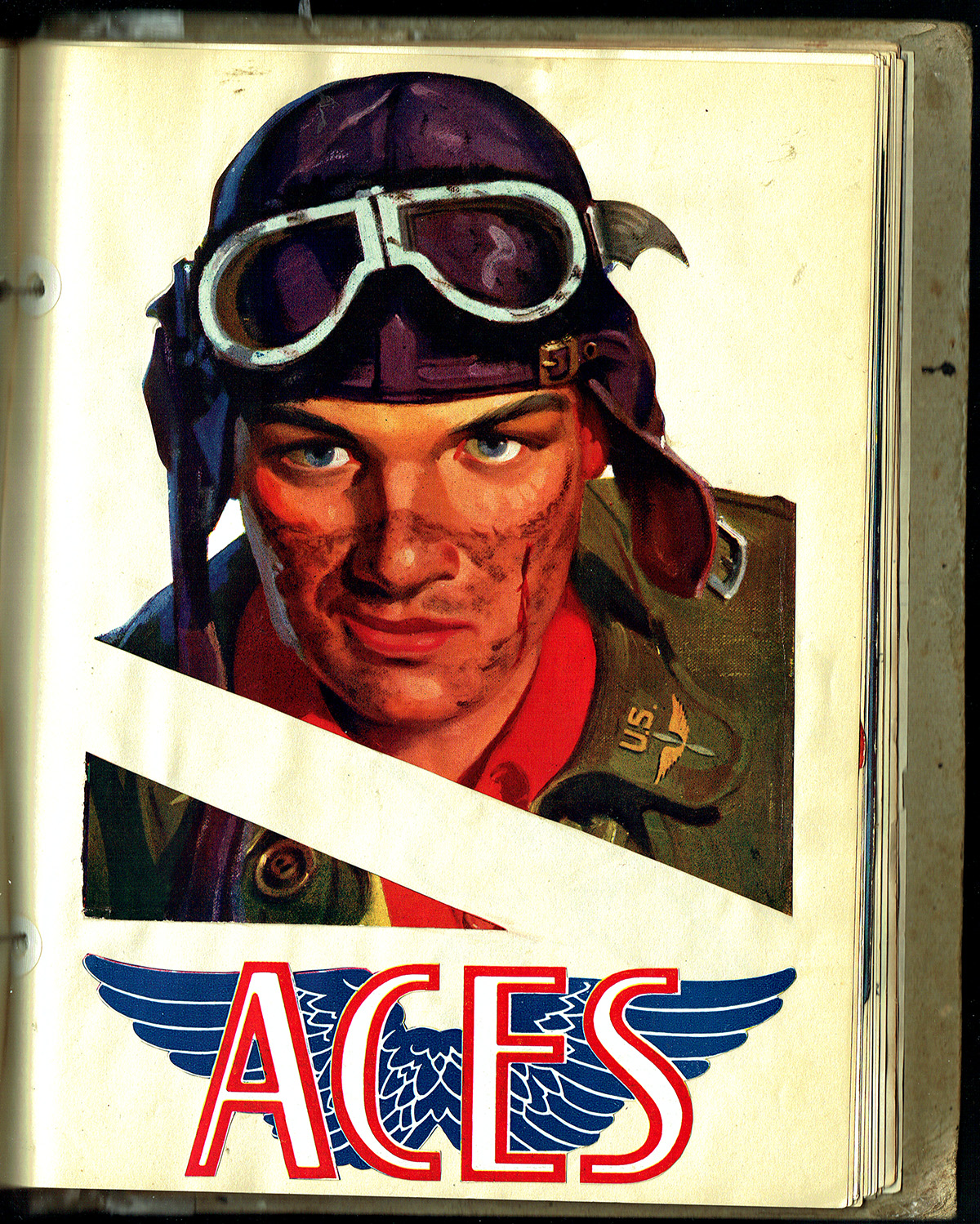
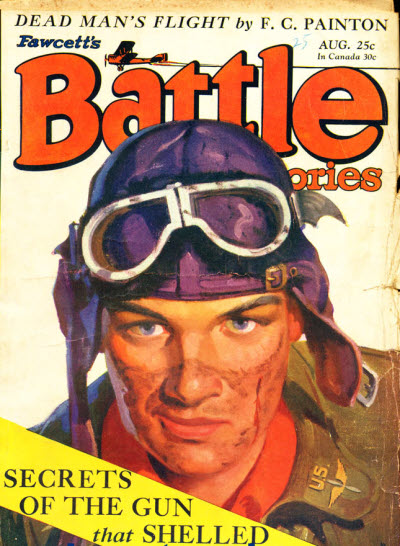

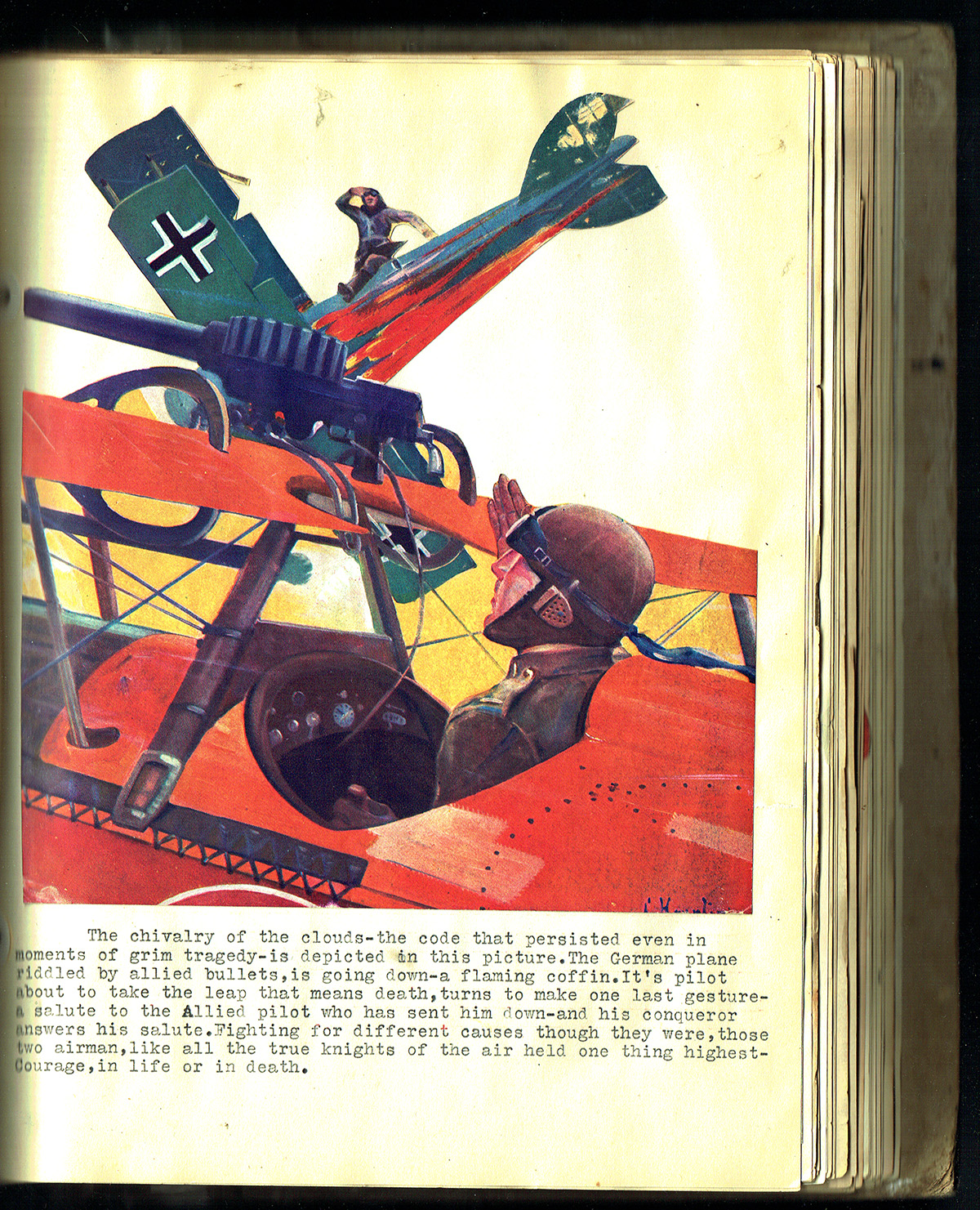
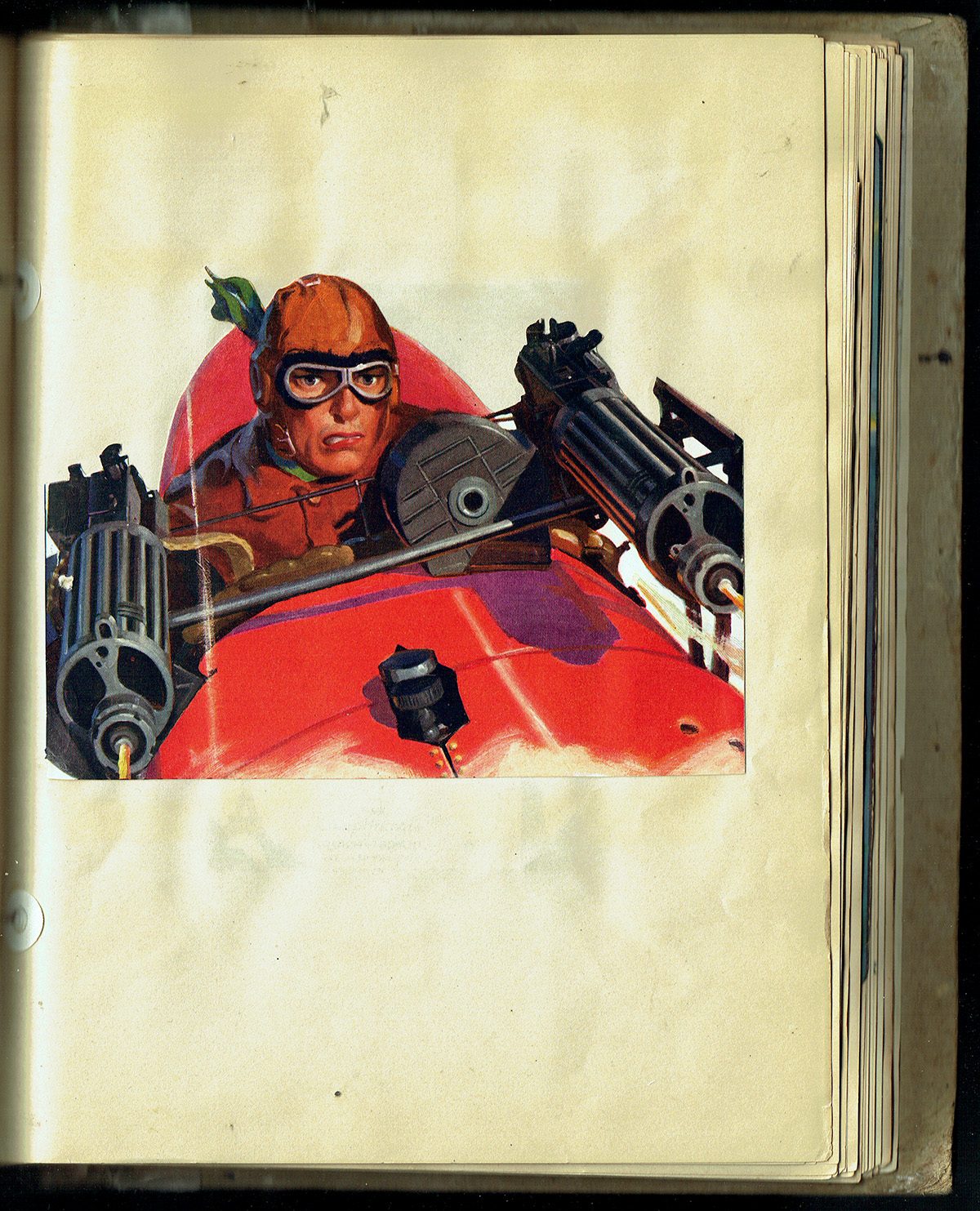
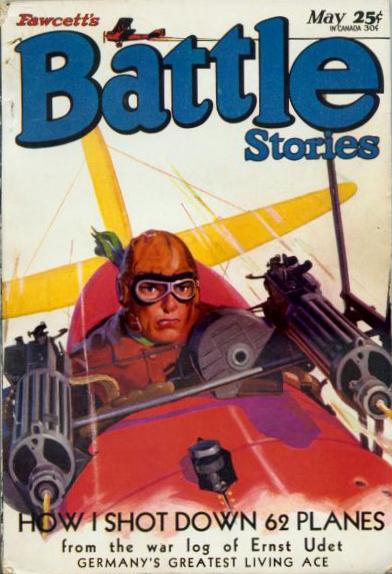
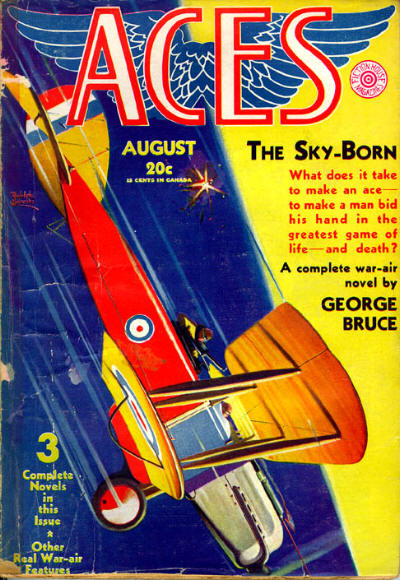
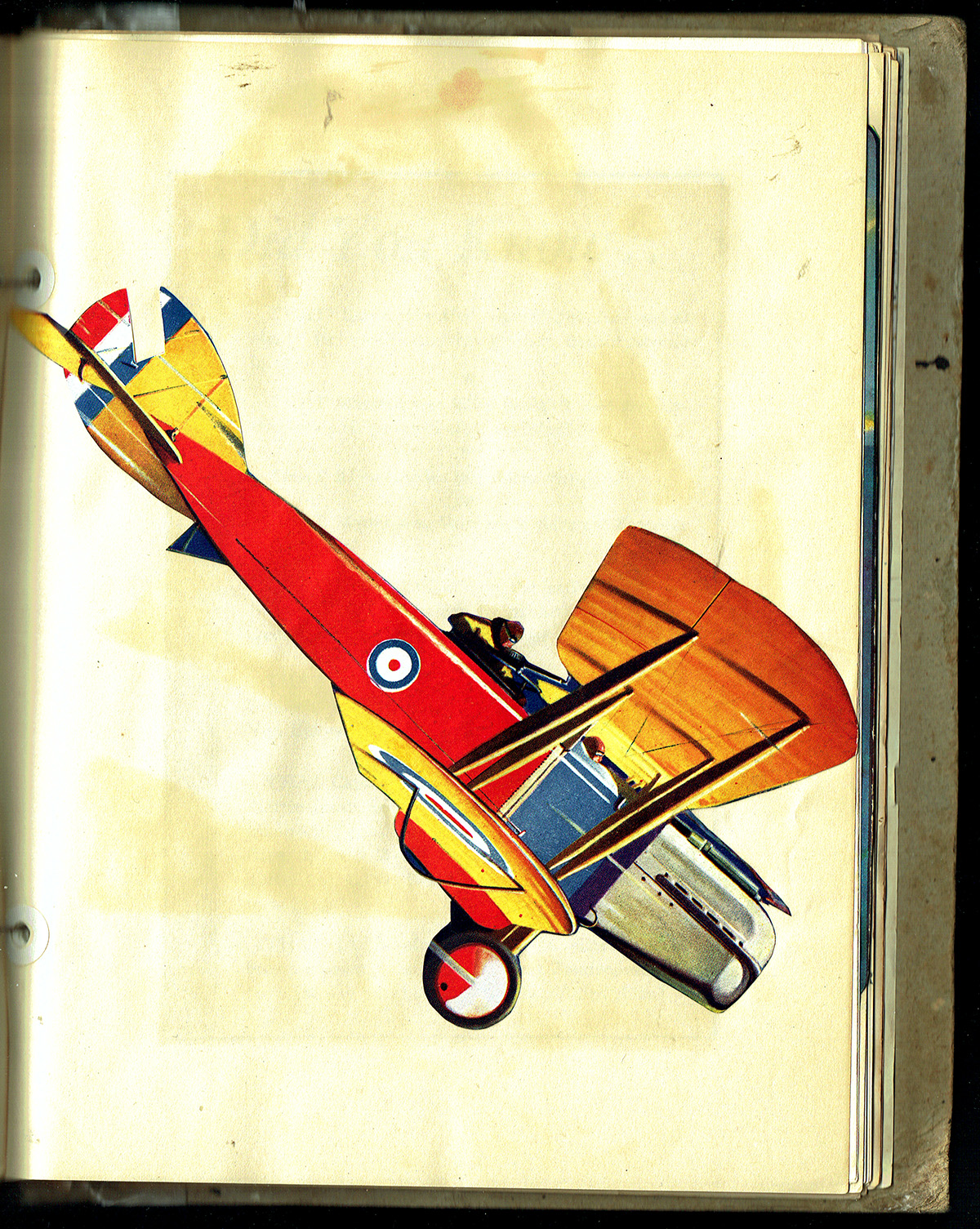
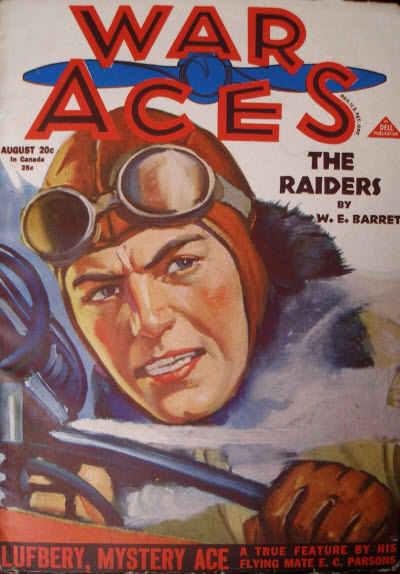 the greatest British offensive of the war got under way. A blazing line of steel whipped across France and into Belgium; from Croiselles to Loos, from Ypres to the Nieuport Canal and to the sea. Under the greatest artillery barrage in the history of the world a grim horde of muddy infantry hit the Hindenburg Line.
the greatest British offensive of the war got under way. A blazing line of steel whipped across France and into Belgium; from Croiselles to Loos, from Ypres to the Nieuport Canal and to the sea. Under the greatest artillery barrage in the history of the world a grim horde of muddy infantry hit the Hindenburg Line.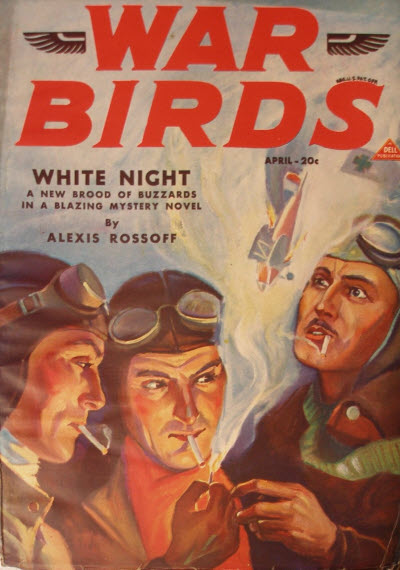 remembered as the man behind
remembered as the man behind 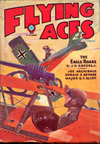



 a story from the pen of a prolific pulp author James Perley Hughes! Hughes was a frequent contributor to various genres of pulps, but he seemed to gravitate toward the air-war spy type stories. And this week’s tale is a prime example—two excellent combat pilots, Sandy Patton and his wingman George Bridges, find themselves transferred to the NIght Owls, a bat patrol that ferries spies over the lines, after a drunken boast. They soon find trouble and intrigue on both sides of the lines from their very first mission when they must fly to QX-31 to extract some agents—a location from which few pilots have ever returned! From the August 1931 issue of Sky Birds, it’s James Perley Hughes’ “The Secret of QX-31!”
a story from the pen of a prolific pulp author James Perley Hughes! Hughes was a frequent contributor to various genres of pulps, but he seemed to gravitate toward the air-war spy type stories. And this week’s tale is a prime example—two excellent combat pilots, Sandy Patton and his wingman George Bridges, find themselves transferred to the NIght Owls, a bat patrol that ferries spies over the lines, after a drunken boast. They soon find trouble and intrigue on both sides of the lines from their very first mission when they must fly to QX-31 to extract some agents—a location from which few pilots have ever returned! From the August 1931 issue of Sky Birds, it’s James Perley Hughes’ “The Secret of QX-31!”

